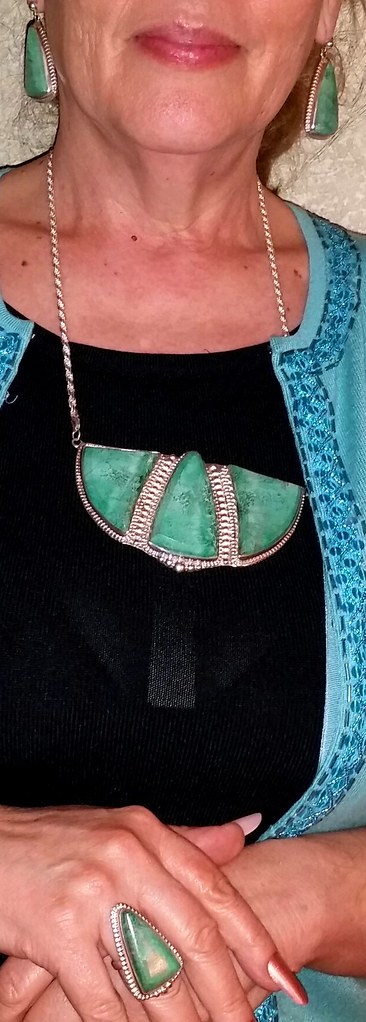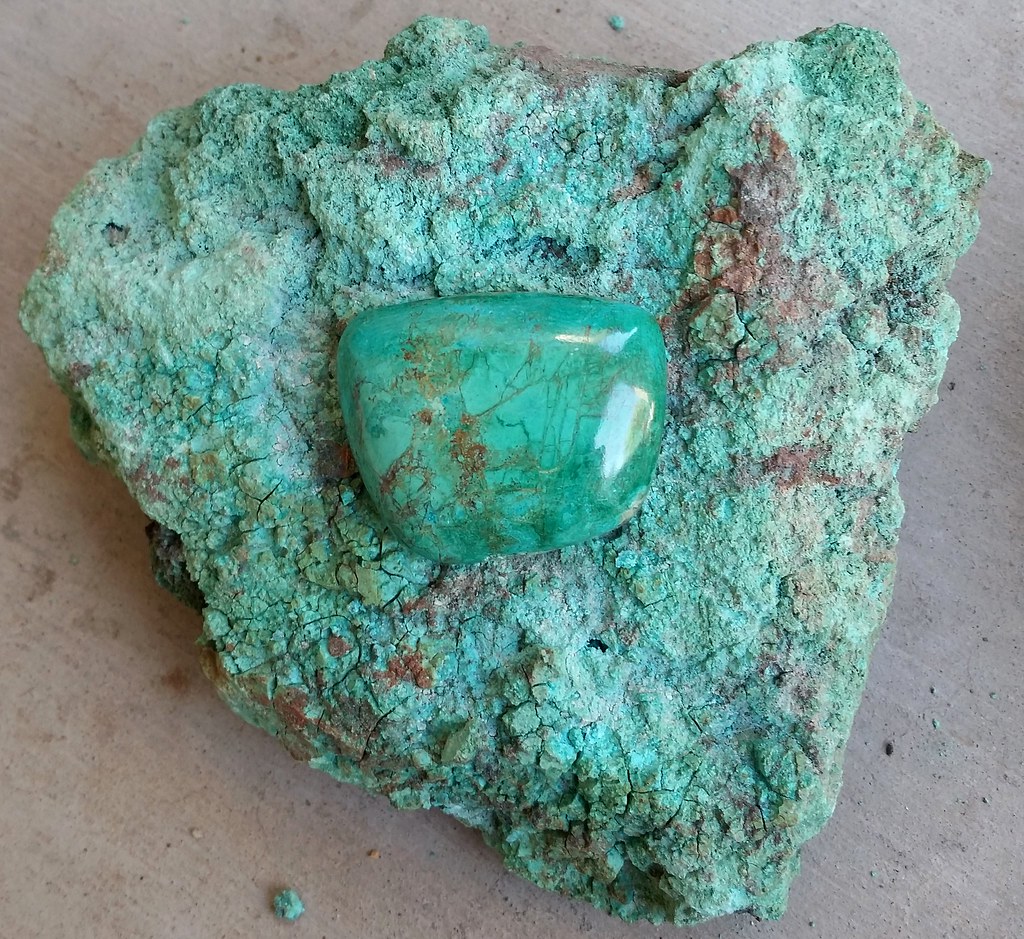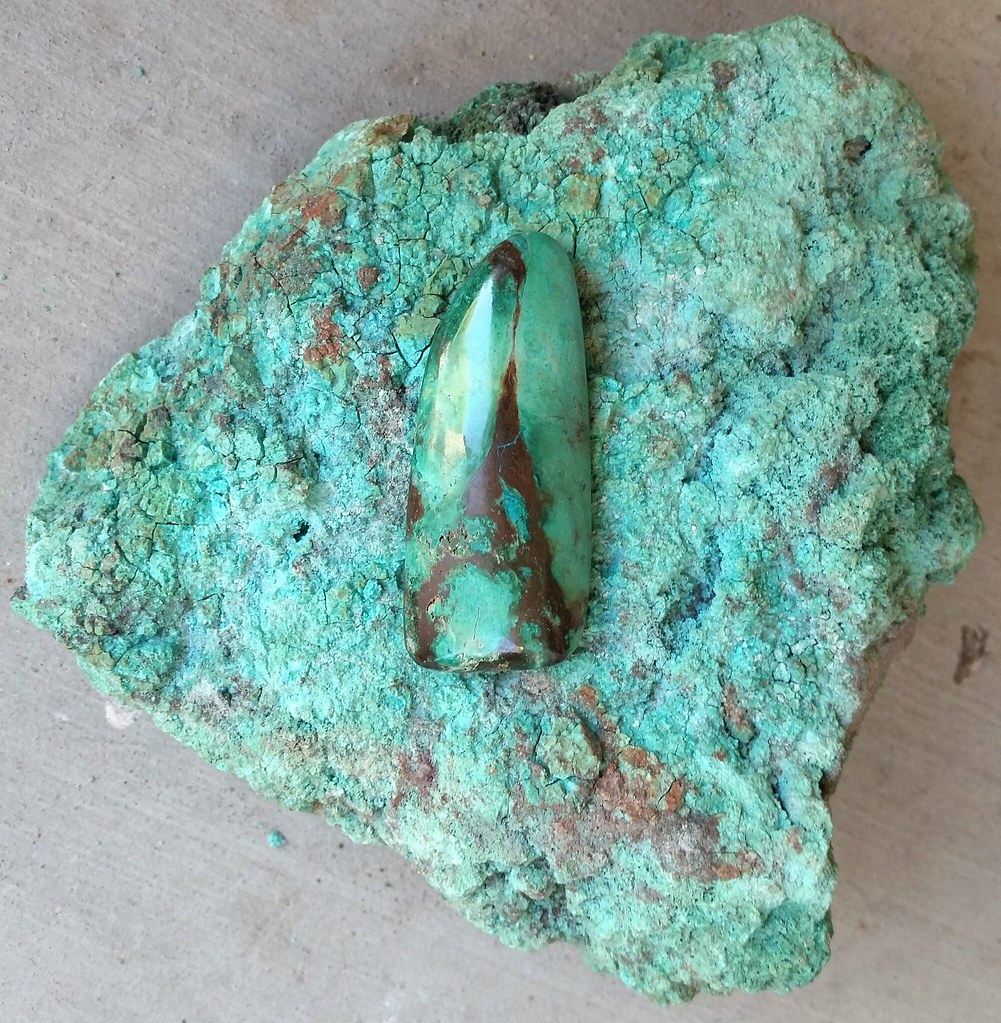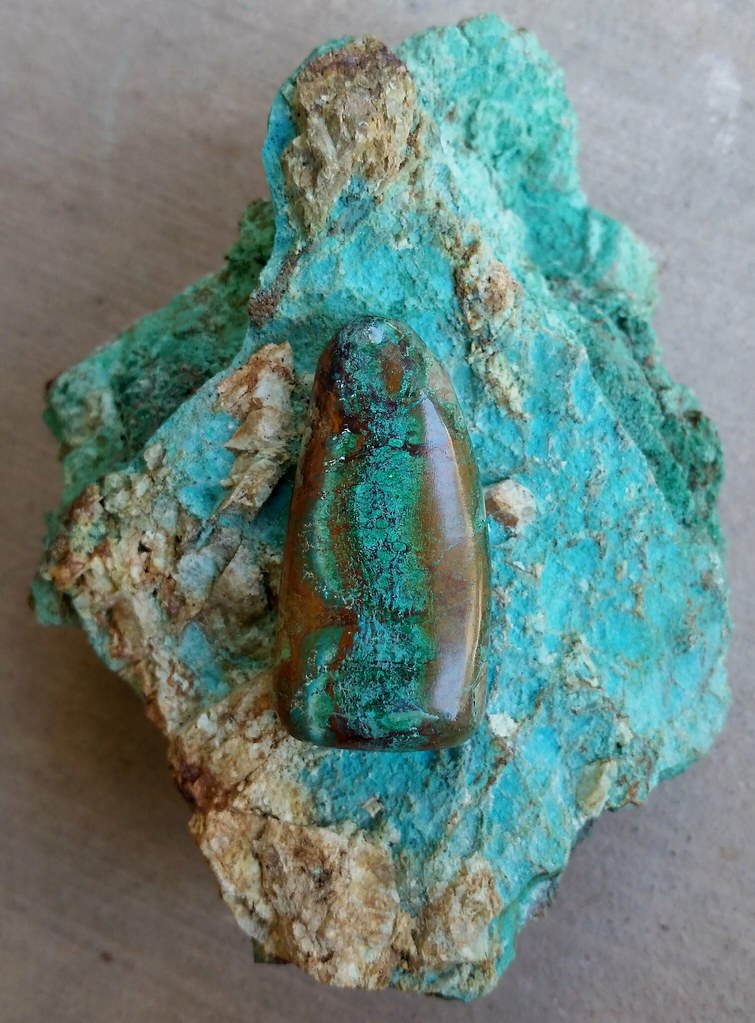Is this the location where you get your slab stone? I rock hound in Washington during the summer. AZ is too freakin hot so I leave it to the snakes, havelinas and coyotes until late fall. A friend of mine left me 25lbs of copper ore in a box over the summer.
I washed it and it looks slab and cab worthy. I have never worked with C/O before. Is the blue silicate referred to as chrysocolla, or is it some other mineral or by product of the copper present in the rock? I feel so naive asking these questions.
This particular mine I have gotten very little from. Maybe 10-20 pounds. Not much high quality material there. The walls look great at first glance but if you looked at it closely in person the veins are very thin and thus not really cabbable. I would like to cut out that one section in the right half of the last photo just a display piece.
I kind of cringe each time I hear the word chrysocolla because the word gets tossed around so loosely. Technically chrysocolla is a copper silicate. As a loose term though people use the term chrysocolla to name any unidentified copper ores, which leads to a lot of confusion. I even have what appears from all tests to be a very high grade, naturally hard turquoise. Some supposed "expert" in Quartzite called in "crapcolla". Let me start b showing some examples of the finished material. And keep in mind that none of this required stabilization and has not had any type of treatment:
 20161108_230632-1 - Copy
20161108_230632-1 - Copy by
James Sloane, on Flickr
 20160828_164515
20160828_164515 by
James Sloane, on Flickr
 20160828_164157
20160828_164157 by
James Sloane, on Flickr
 20160828_164426
20160828_164426 by
James Sloane, on Flickr
Now chrysocolla is actually a very soft stone. Softer than turquoise, which normally needs stabilization. Chrysocolla also has a lower density than turquoise, does not contain phosphate and does not dissolve in acid. This material is naturally hard, has the density of turquoise that is too high for chrysocolla, tested high in phosphate and dissolves in acid yet this so-called "expert" called it "crapcolla". And a guy on the turquoise boards told me that he did not care what my chemistry sets say that he had something like 40 years experience with turquoise and said it was chrysocolla. How can it be chrysocolla when everything points to it being turquoise including proper density and high level of phosphorus not even found in chrysocolla? Point is that it seems like even many of the self proclaimed "experts" really have no clue what they are talking about, which adds to the confusion. Stones can often be very hard to ID just from photos to begin with. That is why we run tests such as hardness, density, streak tests, chemical make up, acid dissolution, etc. to get ID on many stones.
In this case these people who ran no tests on the stone simply concluded chrysocolla because that is the general term used for unidentified copper ores even though chrysocolla is a specific stone. That is like calling jaspers and agates quartz because they all contain silicon dioxide. So don't feel naive, even the self proclaimed "experts" often have no clue what they are talking about.
I also ran across some information recently that states that a lot of the stone being sold as turquoise by the turquoise dealers is not really turquoise but rather planterite. Again testing is required to differentiate the two. You cannot always identify the stone just by look.
Sometimes the term chrysocolla is just used for convenience. For example the term chrysocolla is often applied to the copper ores here in Nevada by our lapidary club because there is such a mix of copper minerals in the ore. The ores here can contain a wide variety of copper minerals including chrysocolla, azurite, malachite, dioptase, rosasite, covalite, and various other rarely heard of copper minerals. So most people just lump it all together with the general term (not mineral) chrysocolla. I prefer to use the term copper ore to reduce confusion.
Finally there is silicated chysocolla, which is not chrysocolla either. Silicated chrysocolla, which also includes gem silica, is actually chalcedony stained with copper salts. Even though it contains silica and copper just like chrysocolla the copper is not pat of the silica complex and chrysocolla is very soft as where silicated chrysocolla is very hard.